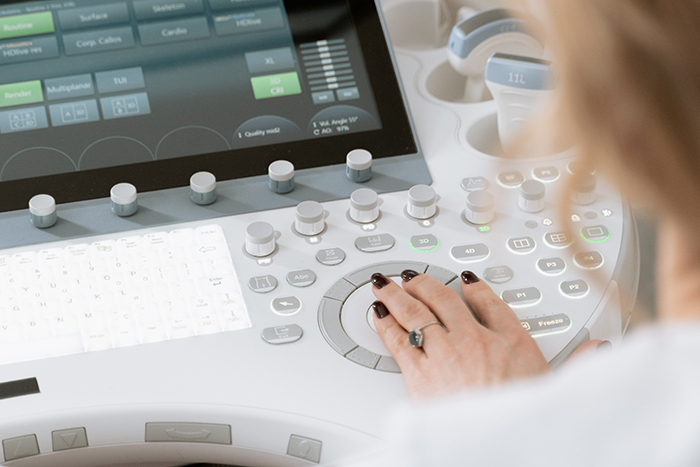By Scott Gottlieb, MD
The development of artificial intelligence devices that rely on large language models for natural language processing and are trained on clinical datasets offers an unprecedented opportunity to advance the practice of medicine. However, how the US Food and Drug Administration (FDA) will regulate these medical devices is uncertain.1 In approaching this challenge, lessons can be drawn from how the FDA has approached regulation of other new technologies. I faced some of these issues when I served as the FDA commissioner from 2017 through 2019.
Lesson 1: Begin With Established Processes
The first lesson is the need to route a novel technology through a familiar regulatory pathway. The agency has established methods for evaluating existing technologies, and in almost all cases, new technologies can fit into one of these channels. This strategy enables innovators to enter the market more quickly than if they were to forge a brand-new path, and once marketed, developers can use the experience gained from real-world use to expand the applications of a new technology. Simultaneously, it provides the FDA with the opportunity to incrementally modify its regulatory policies to best accommodate an innovation based on practical experience.
Take, for example, the heart monitor embedded in the Apple Watch. In 2018, when the FDA first cleared the watch as a medical device, it was for low-risk use in the detection of irregular heart rhythms such as atrial fibrillation in healthy individuals who had not already been diagnosed with a heart disorder. In 2022, Apple received a broader clearance to use the device in individuals with a known heart disorder, enabling wearers to manage their condition after they received a formal diagnosis.
When Apple first approached the FDA, many observers were concerned that the agency would struggle to clear the Apple Watch as a medical device, fearing the FDA would insist on dissecting the device to fully understand its functionality. Instead, recognizing the meticulous work Apple had undertaken to validate the accuracy and reliability of the device, the agency shifted from a purely product-based regulatory focus to one that also considered the manufacturer’s overall work to validate a product.2 This approach to regulating novel medical devices, which the FDA termed a “firm-based approach,” was soon adopted as a pilot policy and became part of a broader effort to modernize and streamline regulatory processes. The approach fosters a more dynamic and responsive regulatory environment. As innovators improve their validation processes and postmarket oversight, they can benefit from less burdensome premarket regulations, thereby encouraging new advances.1,
Lesson 2: Take a Risk-Based Approach to Regulation
A second lesson is the need to carve out low-risk activities when regulators are evaluating a new field and applying active supervision for the first time. One of the most challenging situations for the FDA arises when it is asked to apply a new regulation to an established industry for the first time. This request sometimes stems from new laws that expand the agency’s oversight, as seen with tobacco products. In other cases, it results from the agency’s decision to reverse its enforcement discretion as new risks emerge related to a novel technology. This was the situation the FDA faced with “clinics” that marketed autologous stem cell therapies to patients.
For many years, a false premise was being asserted by some in the stem cell field that a product derived from a person’s own body, manipulated, and then reinserted into the body for a different use from the one it played in its original location was not subject to FDA regulation because it was given back to the person from who it originated. Reflecting uncertainty about the scope of its authority over these products and political pressure to not regulate the field, the FDA exercised enforcement discretion and largely allowed the clinics to operate free of oversight.
As a result, a vast industry comprising hundreds of stem cell clinics emerged, many of which made unsubstantiated claims. By 2017, it had become clear that these cell-based products could pose unique and serious risks of harm. If the cells underwent more than minimal manipulation, their characteristics could change in ways that increased risks. The lack of accepted standards for the development, validation, and delivery of these therapies to patients also hindered the field’s maturation into a safe and reliable form of therapy.
In 2018, the FDA issued a series of guidance documents outlining how it intended to regulate this field, in some cases applying active oversight for the first time. In outlining this new policy, the FDA had to make several accommodations related to the limitation of the agency’s resources, the broad scope of the different activities that were being undertaken by clinicians, and the widely different opportunities and risks that these activities posed.
The FDA decided to exercise enforcement discretion over certain stem cell procedures. This included those involving the use of autologous stem cells derived from adipose tissue in low-risk cosmetic procedures, as well as specific procedures performed by orthopedic surgeons using autologous platelet-rich plasma. The latter involved extracting a patient’s blood, processing it to concentrate the platelets, and then injecting this blood product back into the patient. These procedures are used in orthopedic and sports medicine to treat injuries to tendons, ligaments, muscles, and joints. Even though there was no definitive evidence of their benefits sufficient to meet the FDA’s preapproval requirements, these products were judged to be low-risk as long as the platelet-rich plasma was prepared in a way that did not significantly alter the characteristics of the blood cells and it was used similarly to its original function in the blood (homologous use).
By carving out some low-risk activities, it allowed the agency to focus its resources on high-risk interventions. At the same time, recognizing that many of the procedures were being performed by individual practitioners that lacked the resources to seek FDA approval for their cell therapies, clinicians were allowed to pool their clinical data, so long as they each followed a common protocol for manufacturing the cells, and then filed a joint application with the agency.3
Lesson 3: Use Existing Authoritative Benchmarks
A third lesson is the benefit of having established bodies that can be used to provide authoritative benchmarks for the evaluation of a novel technology. This was the case with the agency’s new policy in 2018 for how it would regulate next-generation sequencing (a technology that assesses a person’s DNA to detect genomic variations to inform treatment decisions).
In creating a framework to ensure validity and help determine the clinical utility of the tests, and to clear them for use in patients, the FDA allowed product developers to validate their tests against FDA-recognized public databases, including ClinGen, which is maintained by the National Institutes of Health. The availability of a public standard recognized by the FDA provided test developers with an efficient path for the marketing clearance or approval of new tests.4
To enable the safe and effective adoption of new medical technologies, regulatory policies must often be as creative as the advances being delivered to health care professionals and patients. Past precedents provide a guidepost for how regulators can enable the adoption of brand-new platforms, such as artificial intelligence devices.
Published: December 28, 2023. doi:10.1001/jamahealthforum.2023.5460
Open Access: This is an open access article distributed under the terms of the CC-BY License. © 2023 Gottlieb S. JAMA Health Forum.
Corresponding Author: Scott Gottlieb, MD, American Enterprise Institute, 1789 Massachusetts Ave NW, Washington, DC 20036 ([email protected]).
Conflict of Interest Disclosures: None reported.
1. Gottlieb S, Silvis L. Regulators face novel challenges as artificial intelligence tools enter medical practice. JAMA Health Forum. 2023;4(6):e232300. doi:10.1001/jamahealthforum.2023.2300



